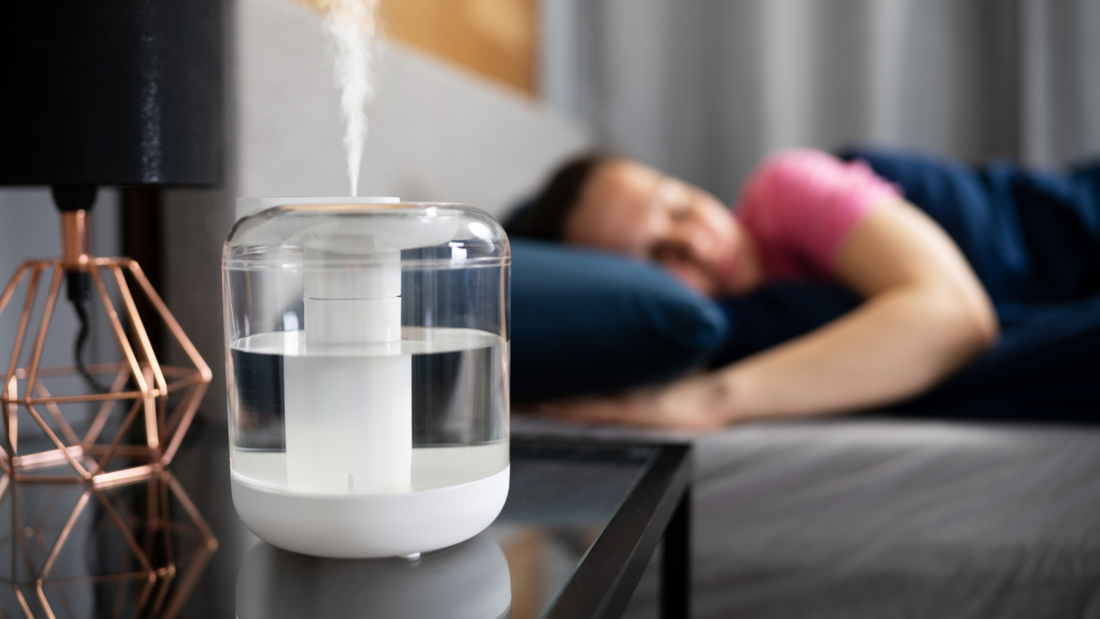
Best Humidity Level for Sleeping: Why It Matters and How to Achieve It
When it comes to getting a good night’s sleep, most people focus on noise, temperature, and light. But there's one often-overlooked factor that can make or break your rest: humidity. So, what humidity level is good for sleeping—and more importantly, how do you achieve it?
Let’s explore the best humidity level for sleeping, how it connects to overall indoor humidity level, and why maintaining the ideal humidity for your house benefits more than just your sleep.
What Is Humidity, and Why Does It Matter?
Humidity refers to the amount of moisture in the air. The term relative humidity (RH) is used to express this as a percentage—showing how much water vapor is in the air compared to how much it could hold at a given temperature.
When RH is too high or too low, it can lead to poor sleep, skin irritation, breathing issues, and even damage to your home.
What Is the Best Humidity Level for Sleeping?
The ideal humidity level in home environments—especially in bedrooms—falls between 40% and 60% relative humidity. This is widely considered the comfortable humidity level for both comfort and health.
According to the ideal indoor humidity chart, here's a general breakdown:
|
Humidity Level |
Sleep Quality |
Potential Problems |
|
Below 30% |
Poor |
Dry skin, sore throat, cracked lips |
|
40-60% |
Optimal |
Comfortable breathing, healthy skin |
|
Above 60% |
Poor |
Mold growth, stuffy air, sweating |
Why Is This Range Considered Ideal?
Maintaining the ideal humidity for sleep can:
-
Prevent dry skin and lips: Low humidity pulls moisture from your skin, especially in winter when indoor air is drier.
-
Ease breathing: Balanced indoor humidity level keeps your nasal passages and throat moist, which is essential for people with allergies, asthma, or sleep apnea.
-
Reduce snoring: Dry air can irritate the throat and worsen snoring. Keeping a good humidity level helps reduce that vibration.
-
Support deeper sleep: The body regulates temperature and respiration more efficiently at proper room humidity levels.
What Should the Humidity Level Be in a House—Not Just the Bedroom?
While sleep is critical, your entire home benefits from ideal humidity levels. For general comfort and health, the best humidity for house conditions is also around 40% to 60%. This helps preserve furniture, prevent static electricity, and keep your HVAC system running smoothly.
The ideal house humidity can vary slightly based on the season:
Summer:
-
Aim for 40–50% RH
-
Excess moisture can lead to mold and discomfort
Winter:
-
Aim for 30–40% RH
-
Air dries out due to heating systems, leading to low humidity issues
So if you’re wondering, what is the ideal humidity in a house, the answer depends on the time of year—but staying in that mid-range is generally safe and healthy.
Tools to Monitor and Control Your Home Humidity Level
You don’t need to guess your indoor humidity level. Use a digital hygrometer to monitor it accurately, or consider installing a smart thermostat with humidity sensors.
To maintain the proper humidity for home settings, you might need one of the following:
A Humidifier
An appliance that adds moisture to the air, especially useful in winter.
A Dehumidifier
Useful in damp climates or excessive humidity situations. It helps lower RH to prevent mold growth and keep air breathable.
HVAC System Enhancements
Make sure your system includes humidity control settings or standalone products that regulate moisture levels.
Signs Your Humidity Levels Are Off
Not sure whether your home humidity level is too high or low? Here are some common indicators:
Signs of Low Humidity:
-
Dry skin and cracked lips
-
Itchy throat and eyes
-
Frequent nosebleeds
-
Increased static electricity
-
Warped wood or furniture shrinkage
Signs of High Humidity:
-
Condensation on windows
-
Muggy or sticky air
-
Mold or mildew smell
-
Worsening of asthma or allergy symptoms
-
Damp bedding or clothes
Knowing these symptoms helps you adjust and find your ideal room humidity zone.
How to Maintain the Ideal Humidity for a Home
Achieving the best humidity level isn’t a set-it-and-forget-it task. Here are practical tips:
-
Use a humidifier or dehumidifier based on seasonal needs.
-
Ventilate your home regularly—especially in kitchens and bathrooms.
-
Seal windows and doors to prevent outside air from affecting indoor moisture.
-
Avoid overwatering houseplants, which can increase humidity levels.
-
Insulate the attic and walls to regulate temperature and moisture consistently.
Is There an Ideal Humidity for a House in Winter?
Yes! In cold climates like Canada, winter presents a challenge. Indoor heating dries out the air, dropping relative humidity in house levels to below 30%, which causes skin problems, breathing discomfort, and worsens certain medical conditions.
To combat low humidity in winter, aim for a humidifier setting that keeps RH around 35–40% without fogging your windows or encouraging mold.
Final Thoughts: What Is a Good Humidity Level for Sleep?
The best humidity level for sleeping is between 40% and 60%. Whether you live in a dry climate or face muggy summers, achieving this ideal indoor humidity can drastically improve your sleep, skin health, and even immune function.
From using tools like a humidifier or dehumidifier to adjusting HVAC settings and monitoring with a hygrometer, there are many ways to take control of your home humidity level.
If you're looking to wake up refreshed—not congested, itchy, or parched—start by asking not just how dark or quiet your room is, but how much humidity is good for your sleep. Chances are, getting it right might be the missing piece in your nighttime comfort puzzle.
